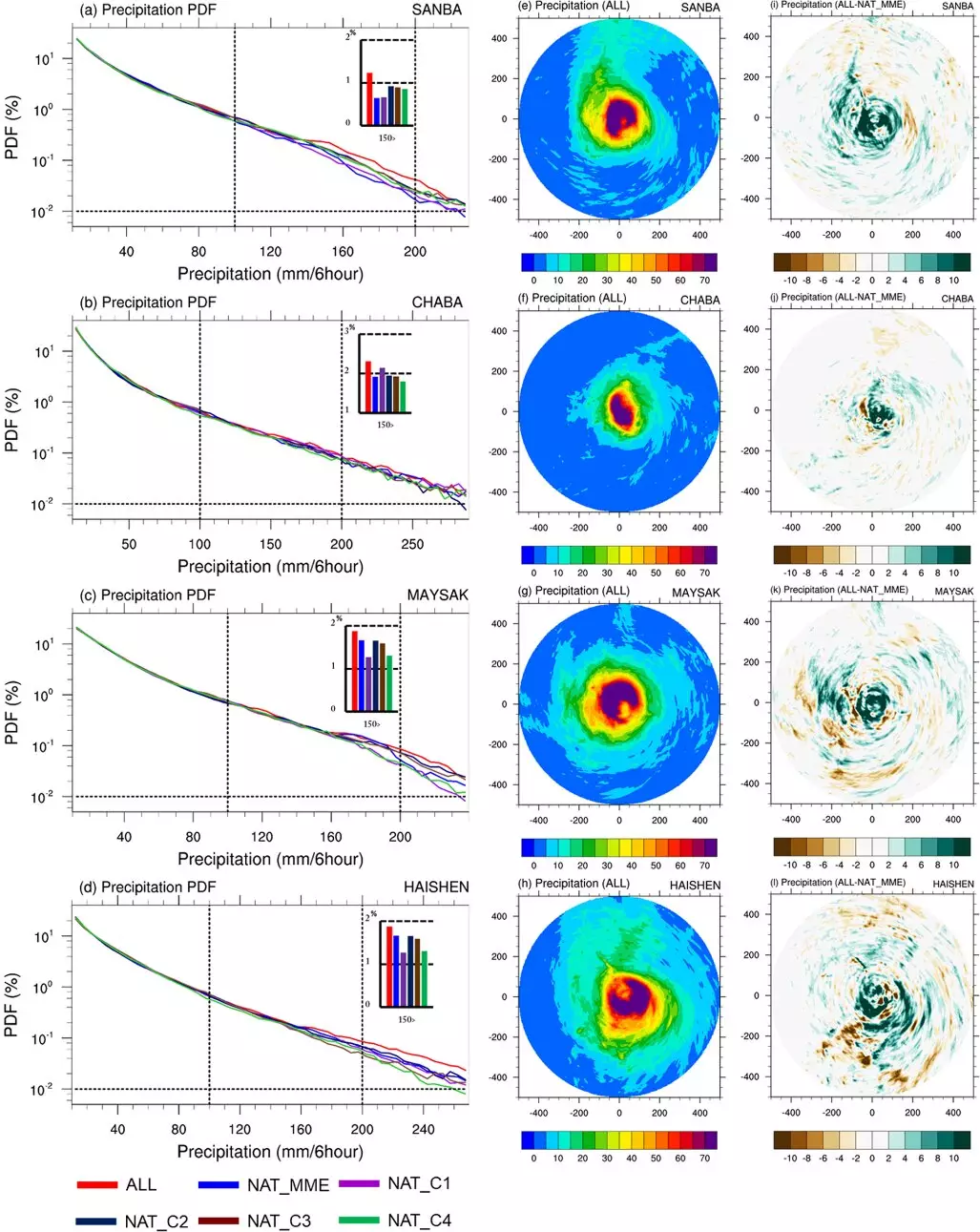The increasing frequency and intensity of typhoons around the world have raised concerns about the impact of global warming on these weather events. In recent years, typhoons like Typhoon Hinnamnor and the unexpected intense downpour in Osong, Chungcheongbuk-do have caused significant damage and loss of life. To better understand the influence of global warming on typhoons, Professor Seung-Ki Min and Dr. Minkyu Lee from the Division of Environmental Science and Engineering at Pohang University of Science and Technology (POSTECH) conducted a groundbreaking quantitative analysis using a high-resolution climate model.
Accurate predictions of climate extremes and their potential damages are crucial for effective mitigation efforts. However, the impact of global warming on typhoons, especially in terms of rainfall extremes, has not been extensively studied. Recognizing this research gap, the team at POSTECH designed a 3-km, high-resolution regional climate model simulation to investigate the influence of global warming on typhoon intensity and extreme precipitation.
Studying Typhoon Trends
The researchers selected four extremely strong typhoons that made landfall on the Korean Peninsula between 2011 and 2020 for their simulations. They compared the typhoons’ behavior under current climate conditions with counterfactual conditions that did not include human-induced warming. By utilizing diverse ocean warming patterns estimated from CMIP6 multiple climate models, the team aimed to reduce uncertainties related to regional sea surface temperature changes.
The results of the simulations confirmed that global warming from human activities contributed to the overall intensity and precipitation of typhoons. Interestingly, the impact of warming was more pronounced at maximum typhoon intensity, indicating a potential future increase in the frequency of powerful super typhoons in East Asia. The research also revealed that the area exposed to extreme rainfall generated by typhoons expanded due to warmer climate conditions. The strengthening of upward motion near the typhoon center and the increase in atmospheric water vapor, both caused by ocean surface warming, played significant roles in this expansion.
The high-resolution climate model simulations conducted by Professor Min and Dr. Lee provide conclusive evidence of the amplifying effect of global warming on typhoon strength. These findings highlight the urgent need for comprehensive measures to mitigate the risks associated with such extreme weather events. By understanding the impact of global warming on typhoons, policymakers and climate scientists can work together to develop effective strategies for disaster preparedness and prevention. Additionally, continued research in this field is crucial for refining climate models and improving prediction accuracy, ultimately saving lives and safeguarding communities.


Leave a Reply